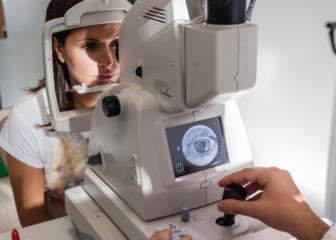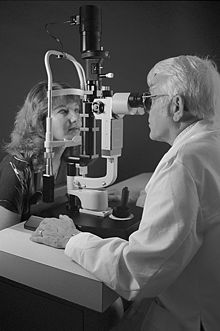Check Out the very best Optometrist Chino for Comprehensive Eye Care
Check Out the very best Optometrist Chino for Comprehensive Eye Care
Blog Article
Checking Out the most recent Technological Improvements in Optometry and What They Mean for Optometrists
From the accuracy of Optical Comprehensibility Tomography to the nuanced understandings provided by AI-driven diagnostic devices, these technologies are setting new requirements in person assessment and treatment. As these developments permeate the method, eye doctors are faced with the challenge of accepting these tools to improve person end results.
Innovations in Diagnostic Tools
Advancing the field of optometry, developments in diagnostic tools have changed the means eye treatment professionals assess and diagnose eye problems and aesthetic disabilities. The previous decade has experienced significant technological innovations, enabling even more detailed and precise examinations. Optical Coherence Tomography (OCT), for example, offers high-resolution cross-sectional pictures of the retina, enabling the very early discovery of illness such as glaucoma and age-related macular degeneration. This non-invasive imaging technique has actually ended up being vital in modern optometric method.
One more key technology is the introduction of sophisticated corneal topography systems, which map the surface area curvature of the cornea with precision. These tools are specifically advantageous for suitable get in touch with lenses and diagnosing corneal problems. Digital retinal imaging has transformed conventional ophthalmoscopy, offering comprehensive, scenic sights of the retina that facilitate complete aesthetic examinations.
The advancement of wavefront aberrometry has actually also been essential, allowing the evaluation of refractive errors with unequaled precision (Eye Doctor Optometrist). This modern technology assists in customizing restorative lenses and boosting surgical end results for refractive surgeries. Collectively, these diagnostic improvements encourage eye doctors to supply superior client treatment, making sure very early intervention and tailored therapy techniques, inevitably improving visual wellness end results
AI in Individual Administration
Building on the structure of cutting-edge analysis devices, the unification of artificial knowledge (AI) in person administration stands for a transformative leap for optometry. AI systems are significantly utilized to boost performance, precision, and customization in individual care. By evaluating large quantities of information, AI can determine patterns and predict prospective ocular problems, enabling optometrists to customize treatments much more successfully. This capability is crucial in taking care of chronic eye diseases such as glaucoma and diabetic person retinopathy, where early discovery and continual surveillance are key.
Additionally, AI-driven platforms promote streamlined individual communications and administrative procedures. Automated scheduling, digital assessments, and individualized follow-up plans not just enhance patient contentment but additionally optimize time administration for practitioners. These systems can triage individuals based upon the seriousness of their conditions, guaranteeing that those in critical requirement obtain prompt attention.
Moreover, AI boosts decision-making by providing optometrists with evidence-based suggestions and therapy paths. By incorporating information from electronic health records, AI tools use understandings that inform professional choices, reducing the risk of mistakes and improving client end results. As AI proceeds to evolve, its function in client administration will likely increase, improving the landscape of optometric treatment.
Advances in Retinal Imaging
In the world of optometry, retinal imaging has witnessed exceptional technological advancements that are improving analysis capacities and individual treatment. Technologies such as Optical Comprehensibility Tomography (OCT) and fundus photography have revolutionized just how eye doctors picture and examine the retina.
Improved imaging techniques like OCT angiography are additional reading further refining diagnostic Click Here accuracy. Opticore Optometry. Such advancements assist in the recognition of minute retinal modifications that can signify illness development.
In addition, advancements in expert system are increasing retinal imaging by making it possible for automatic analysis of huge datasets. These systems aid eye doctors in recognizing patterns a sign of pathology, consequently improving diagnostic precision and efficiency. Collectively, these advancements are changing retinal imaging right into a foundation of contemporary eye treatment, boosting end results and increasing restorative opportunities.
Teleoptometry's Expanding Role
Teleoptometry is progressively coming to be a vital part of eye care, driven by improvements in electronic communication and diagnostic devices. This is specifically helpful in country and underserved areas where accessibility to specialized eye treatment is usually minimal.
The combination of expert system (AI) further boosts teleoptometry, allowing the analysis of aesthetic information and aiding in the discovery of ocular conditions such as glaucoma and diabetic person retinopathy. AI-powered formulas can rapidly analyze complicated imaging data, supplying optometrists with valuable understandings that strengthen clinical decision-making.
Moreover, teleoptometry sustains continuity of treatment with seamless integration with electronic wellness records (EHRs), permitting optometrists to keep extensive patient histories. When seeking advice from with various professionals., this ensures that individuals receive individualized and regular care also.
Despite these advantages, difficulties stay, including guaranteeing information safety and security and taking care of client assumptions. However, teleoptometry stands for a considerable stride in the direction of more available, effective, and patient-centered eye treatment. As innovation progresses, its duty is poised to broaden additionally.

Future Trends in Eye Care
A myriad of ingenious patterns is set to reshape the future of eye care, driven view publisher site by technical innovations and the evolving demands of people. One considerable trend is the combination of man-made knowledge (AI) in diagnostics, which promises to enhance the precision and efficiency of eye examinations. AI algorithms can evaluate substantial quantities of information from retinal images, potentially spotting conditions like diabetic person retinopathy and glaucoma earlier than standard methods.
Moreover, tailored medication is acquiring grip in optometry, with hereditary testing educating personalized treatment strategies. This method intends to enhance client end results by customizing interventions to specific genetic accounts. Wearable innovation, such as clever call lenses, is also coming up, using real-time monitoring of intraocular stress or glucose degrees, thus giving constant understandings right into ocular and systemic health and wellness.
The adoption of enhanced fact (AR) and online fact (VR) in training and person education is an additional emerging fad. These innovations offer immersive experiences that can improve understanding and abilities both for patients and optometrists. As these fads evolve, eye doctors must stay abreast of technical advancements to supply cutting-edge care, making sure improved client results and fulfillment in the vibrant landscape of eye care.
Final Thought

Jointly, these diagnostic developments empower eye doctors to provide exceptional individual care, ensuring very early intervention and tailored treatment techniques, ultimately improving aesthetic health outcomes.

As these modern technologies continue to progress, eye doctors must adapt and integrate them right into practice, eventually maximizing workflow effectiveness and raising the criterion of eye treatment delivered to clients.
Report this page